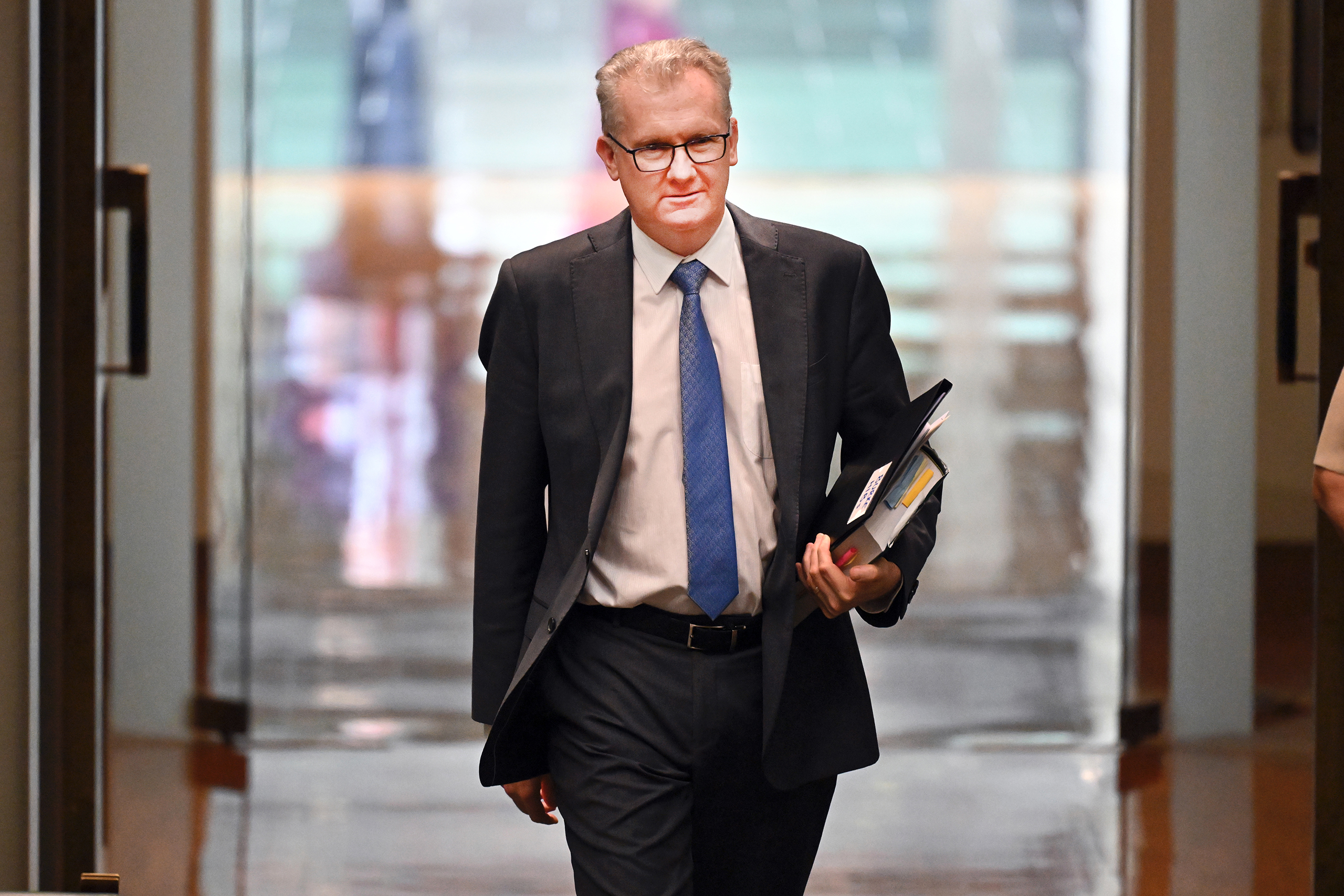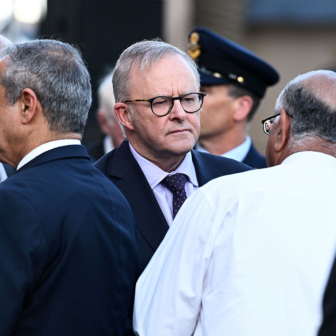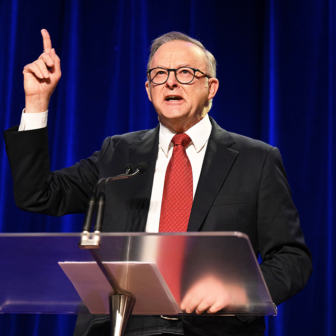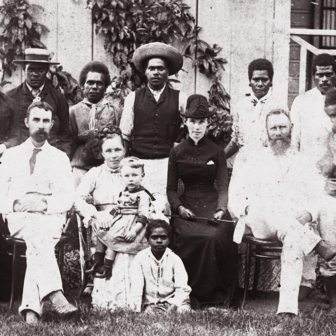It was the announcement that didn’t happen. The federal government usually enters each new financial year with “planning levels” for the permanent migration program. Typically, these are announced in the federal budget. But not this year.
The cynical view is that the government wanted to avoid any mention of immigration so soon before an election. The Coalition was accusing Labor of losing control over the borders and fuelling escalating house prices. Any mention of migration numbers would have given its campaign more oxygen and distracted from the tax cut treasurer Jim Chalmers conjured up for voters on budget night.
The official explanation is that the government intends shifting to a multi-year approach. Rather than set an annual target it will extend the “planning horizon” over four years, just as it does with spending and revenue projections in the budget’s forward estimates. And since consultations on the size and composition of the first four-year cycle had not yet been held, there were no migration numbers to include in the budget.
Until government does set new planning levels, the size and composition of the permanent migration program defaults to last financial year’s settings of 185,000 places, with 132,200 set aside for skilled migration and 52,500 for family migration. (Three hundred “special eligibility” visas and 20,000 places in Australia’s refugee and humanitarian program are counted separately.)
The roughly 70–30 split in favour of skilled migration reflects the bipartisan bias of the past twenty five years, interrupted only by border closures during the pandemic.
Governments prioritise skilled migrants over family migrants because they’re perceived to lift productivity, fill labour market gaps and increase tax revenue. But the bias towards skills brings challenges, most notably backlogs and delays in the much smaller family stream, which is made up mostly of parents and partners.
So dire is the state of the parent category that even holding out the prospect of a visa seems like a cruel hoax. Home Affairs advises new applicants to anticipate a processing time of either fourteen or thirty-one years, depending on whether they can pay $48,640 for a “contributory” visa or $7345 for a standard visa. When Tony Burke took over as minister in the middle of last year, more than 151,000 applications were backed-up in the system. By 30 April this year the number had grown to 155,000.
Governments have ignored this longstanding blow-out with impunity because delays in parent migration have minimal electoral impact. Overseas-born Australians beat a steady trail to electorate offices asking local MPs for help to settle their parents in Australia, but to no avail. It’s an issue with limited public traction even if it cuts deep with affected families. The major parties have tinkered, but substantial action has been consigned to the too-hard basket.
A real effort to tackle the problem could involve any of three possible decisions: dramatically increasing the migration intake; shifting a significant share of places from the skilled program to the family program; or freezing new parent-visa lodgements for at least a decade until the applications on hand are dealt with. None of these options are politically palatable, so governments find it easier to stand back and let the queue grow.
Nor is there any legal or administrative compulsion to tackle the backlog. Section 85 of the Migration Act gives the minister the power to cap the number of visas granted in any financial year: not just parent visas but most other categories as well. Once the cap is reached, section 86 of the Act stipulates that no more visas of that type can granted and all other applications must be held over until the following year. The number of new applications has been triple the number of visas granted since 2019, so the queue and the wait have lengthened accordingly. On recent trends, the backlog could be close to 200,000 by the next election.
Partner visas pose an even bigger challenge, even though the backlog is smaller, because section 87 of the Migration Act prevents the minister from restricting visas for applicants who are the spouses or de facto partners of Australian citizens and permanent residents. Unlike parent visas, in other words, partner applications can’t be capped and queued — at least not lawfully.
The number of partner visas issued each year is supposedly “demand driven” and the official line from Home Affairs is that the government’s annual planning level for partner visas is “indicative only.” But if this were the case, visa grants would rise and fall in line with the number of applications lodged.
Figures going back fifteen years reveal a different pattern. Rather than approvals tracking lodgements, they adhere strictly to the annual targets set by government.
The red line of visa approvals aligns closely, and often exactly, with the blue line of “indicative” planning levels. At best, it bears a very weak relationship to the black line of visa lodgements. It’s true that there will always be a gap between lodgements and approvals — some visa applications are withdrawn or refused — and a lag as processing responds to changing demand. But in a demand-driven program the relationship should be clear. During Covid, demand plummeted yet visa grants spiked — the result of government playing catch up by moving places to the family stream from the skilled stream when borders were closed.
If the number of approvals is fixed by the planning number rather than fluctuating in line with demand, not everyone will get a visa in a timely manner when applications rise. As for parent visas, this will generate a backlog of partner visa applications and lengthening processing times.
Again, the official figures shows this. On 30 June 2010, the department had 27,900 partner visa applications to process with a swift three-month median processing time for onshore lodgements. A decade later, the queue had tripled to 96,000 applications and the median processing time was a tardy seventeen months.
After Covid gave the government the opportunity to shift visas to the family program, pressure was reduced on a system that was also receiving fewer applications. By 30 June 2022, the queue was down to 56,000 applications and median processing times had fallen to ten months.
Since Covid ended, though, the backlog has re-emerged. The planning level has stayed at 40,500 places despite growing demand, and by 30 April this year Home Affairs had more than 83,000 visa applications on hand and the median processing time had ballooned back to fifteen months.
We should remember what that means for the individuals and families involved. Half of all applicants will wait more than fifteen months, sometimes a lot more, for a decision. As months stretch into years, people forced to put their lives on hold can become anxious and distraught. The 2022 report of a Senate inquiry into family visas provides glimpses of these experiences. One witness, Jayne Sexton, told the committee:
We have been living our lives in limbo for over a year and a half my mental and physical health had deteriorated due to the constant stress and anxiety caused by the never-ending wait… My son has suffered greatly and constantly asked when the only person he calls dad is coming back. How do you explain this painful process to a child?
Another, Christelle Rageh, submitted:
I cry almost every night… It hurts me to see all my friends and family building their lives, getting married and sharing a home together when I cannot even get a hug from my partner.
The base application charge for a partner visa is $9635 and refunds are rarely available. Lance Holden described the system as an opaque, expensive lottery:
There are no details of the queue ahead of you application and the rate it is being cleared… I’m not aware of any process that takes a very large up-front payment with no guarantee of when a result will occur or what it is.
If the allocation of partner visas was truly “demand driven” then processing times and the number of applications with the department should remain relatively constant while the planning level rises and falls in response to lodgements. What we see is the opposite — the planning level remains fixed while visa queues and processing times fluctuate.
The government will have to confront this problem during its forthcoming consultations on the size of the migration program, though Home Affairs says only that the timing of those talks “will be communicated when confirmed.”
When it comes to partner migration, consultation should be redundant: the government’s only legal option is to grant more visas if and when demand increases. It’s reluctant, though, to increase the overall size of the permanent migration intake or to shift places from the skilled stream to the family stream. The alternative — keeping partner visas at the same level as last year — runs counter to Section 87 of the Migration Act. Surely no government would act in this way?
Australia’s leading demographer, Professor Peter McDonald, argues this is exactly what has happened in the past. In his submission to the Senate inquiry he pointed to the strong evidence that successive Australian governments have been flouting the law. “Departmental documentation leaves no doubt that the number of partner visas has been capped,” he wrote.
When it gets around to holding consultations on the migration planning level, the Albanese government will have to decide whether to continue this practice or align its actions with the requirements of the Migration Act, which says parents can be ignored, but partners cannot. •




